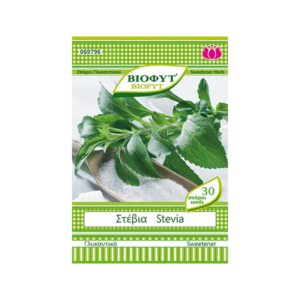Parsley Curly
Parsley Curly
Parsley is one of the most favorite herbs that we grow in the garden and also in a pot on our balcony. It stands out for its wonderfully aromatic leaves that we cut fresh to use in salads, in pies and in special cooking recipes. Although it is a biennial vegetable, parsley is usually grown as an annual plant. Parsley has a high nutritional value, as it has a high content of antioxidants and vitamins. Parsley needs fertile soil with good drainage and rich in nutrients, so we enrich the soil we have with compost, manure and organic fertilizer to improve its fertility. Parsley prefers cool weather, in sunny places with temperatures of 10-20°C.
Parsley needs frequent watering in small amounts at a time, avoiding excess moisture that can cause the parsley leaves to turn brown and rot. So we water every 2-3 days during the spring and autumn, while in the summer we make sure to water more regularly. Watering the plants on hot summer days can be done daily to cope with the high temperatures that can also cause drying of the leaves.
More Products
Cucumber mini
Cucumber miniThere are dozens of cucumber varieties and hybrids that are commercially available and that we can plant. Depending on the size of the fruit, the cucumber varieties are divided into the large-fruited varieties and the small-fruited varieties that, in addition to being fresh, are also used for pickling. A traditional long-fruited variety of cucumber is the Kalybiotiko cucumber, suitable for summer outdoor cultivation that gives very tasty smooth dark green fruits, about 40 cm long. Among the small-fruited varieties, we distinguish the Knossos variety, from the Heraklion region of Crete, with a smooth, dark green, crunchy fruit about 20 centimeters long. Long cucumber, a traditional variety of cucumber.
Marconi beans
Marconi beansThere are many popular native and traditional bean cultivars, both low and climbing, to choose from. Most growers prefer fresh bean varieties that do not have fiber, as they are more pleasant to eat. We should note that the dry bean varieties have a harder shell and more fiber. Well-known varieties of fresh beans are chauli, terli, broad bean (black-eyed), broad bean (snake bean), mullets (beads), canary beans (yellow beans), bulgara (early mullet), zargana, climbing mullet, while in some regions we will meet other interesting local varieties. An excellent traditional variety of dry beans are the giants of Prespa. It is worth noting that the climbing bean varieties are much more productive than the low varieties, while at the same time they have a longer production period, although they take longer to enter production than the low ones.
Bean cultivation needs fertile soil, rich in organic matter and with good drainage to have good growth and fruiting. When preparing the soil for cultivation, we first plow the field to make the soil sufficiently loose, as it is necessary for the formation of a rich and strong root system of the bean. Then, before planting the bean, we incorporate enough compost, digested manure and organic manure to enrich the soil with organic matter and nutrients.
Chard
ChardThe chard, the beet’s cousin! Swiss chard is not grown for its underground part, the root like beetroot, but for its tasty leaves, which we eat cooked or boiled in various recipes. A fall planting vegetable, Swiss chard is an easy crop with no particular requirements, and very healthy as it helps regulate sugar. It is grown as an annual vegetable, as it blooms in the second year. There are many varieties of chard, with light green to dark green leaf color and red or white stems and veins, depending on the variety.
Varieties of Swiss chard with red veins make them visually similar to beets. Note that due to its impressive foliage, the chard also adds decorative value to our autumn vegetable garden. The chard prefers cool weather. Although it does not tolerate high temperatures, the chard seeks sunny or semi-dark places, while it is also relatively resistant to light frost. It wants deep fertile soils, enriched in organic matter that also have good drainage.
Stevia
SteviaStevia is a perennial plant, also known as melophyllo or sweet leaf of Paraguay. Stevia contains a substance, steviol, which has a high sweetening power, which is why it is used as a sweetener instead of sugar. We can grow stevia in a pot or in the garden and harvest its leaves to sweeten our coffee, tea or to use in various homemade sweets.
Spinach Virofly
Spinach ViroflySpinach needs cool weather and sunny locations to grow and thrive in the fall season. It is also particularly resistant to low winter temperatures. In the spring season, we prefer to plant it in semi-shaded places, as in places with a lot its flowering stem develops prematurely, which stops the vegetation and the production of tender leaves. We plant spinach in fertile, fluffy soil, enriched in nutrients that ensure good growth. Till the soil well before planting and incorporate compost, well-digested manure and complete organic fertilizer.
Sage
SageSage is quite a hardy plant and grows in a variety of soils, even dry, barren and stony soils. Sage grows best in sandy, calcareous soils with very good drainage that warm up in early spring. Sage is resistant to both low and high temperatures, meaning we can plant it in hot and cold areas. Prefers places with sun both in the garden and on the balcony.
When planted in the shade, it shows stunted growth and can show rot in the shoots and the root. Incorporating organic matter in the form of digested manure and compost when planting sage is beneficial for its growth.









